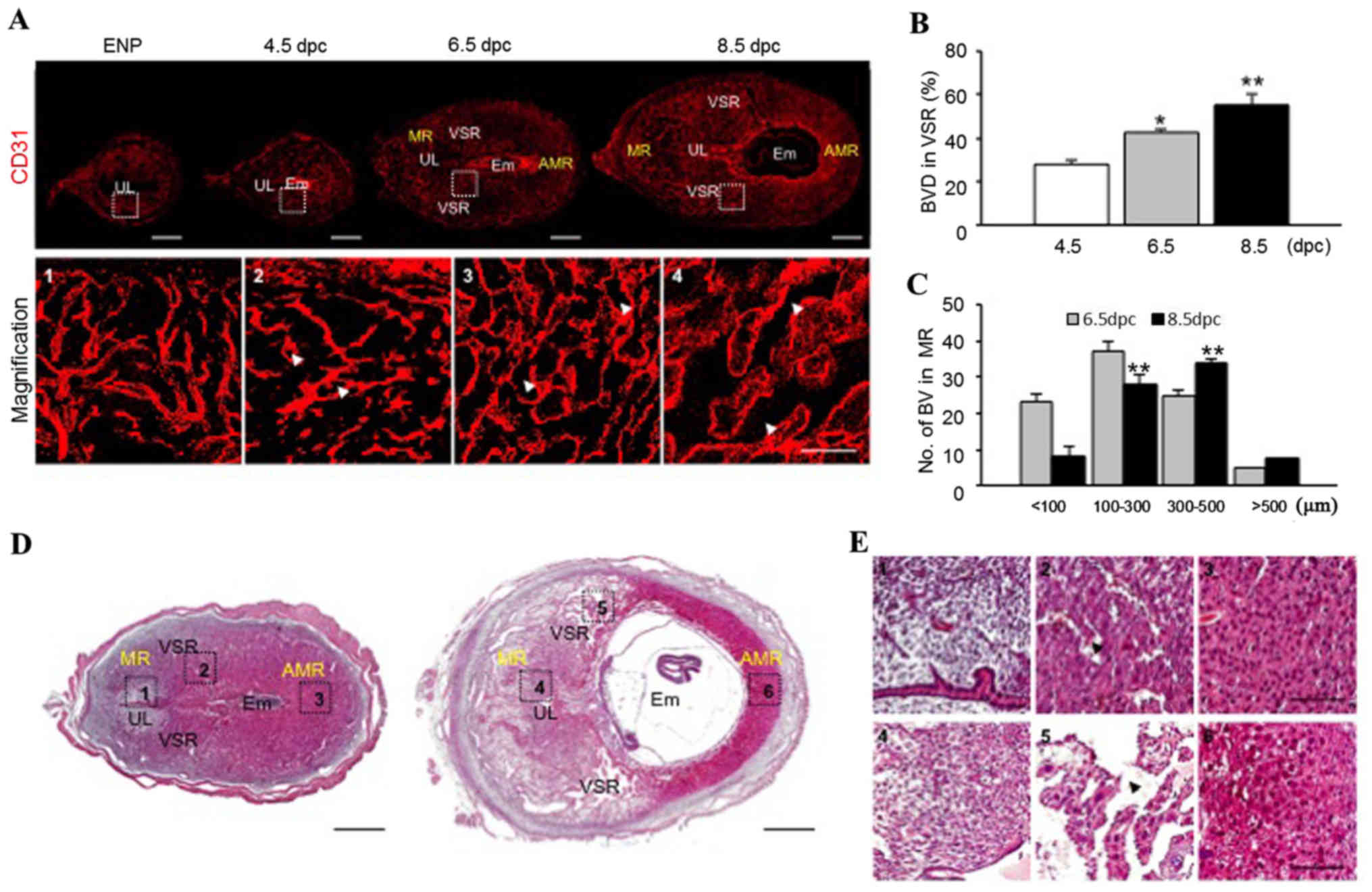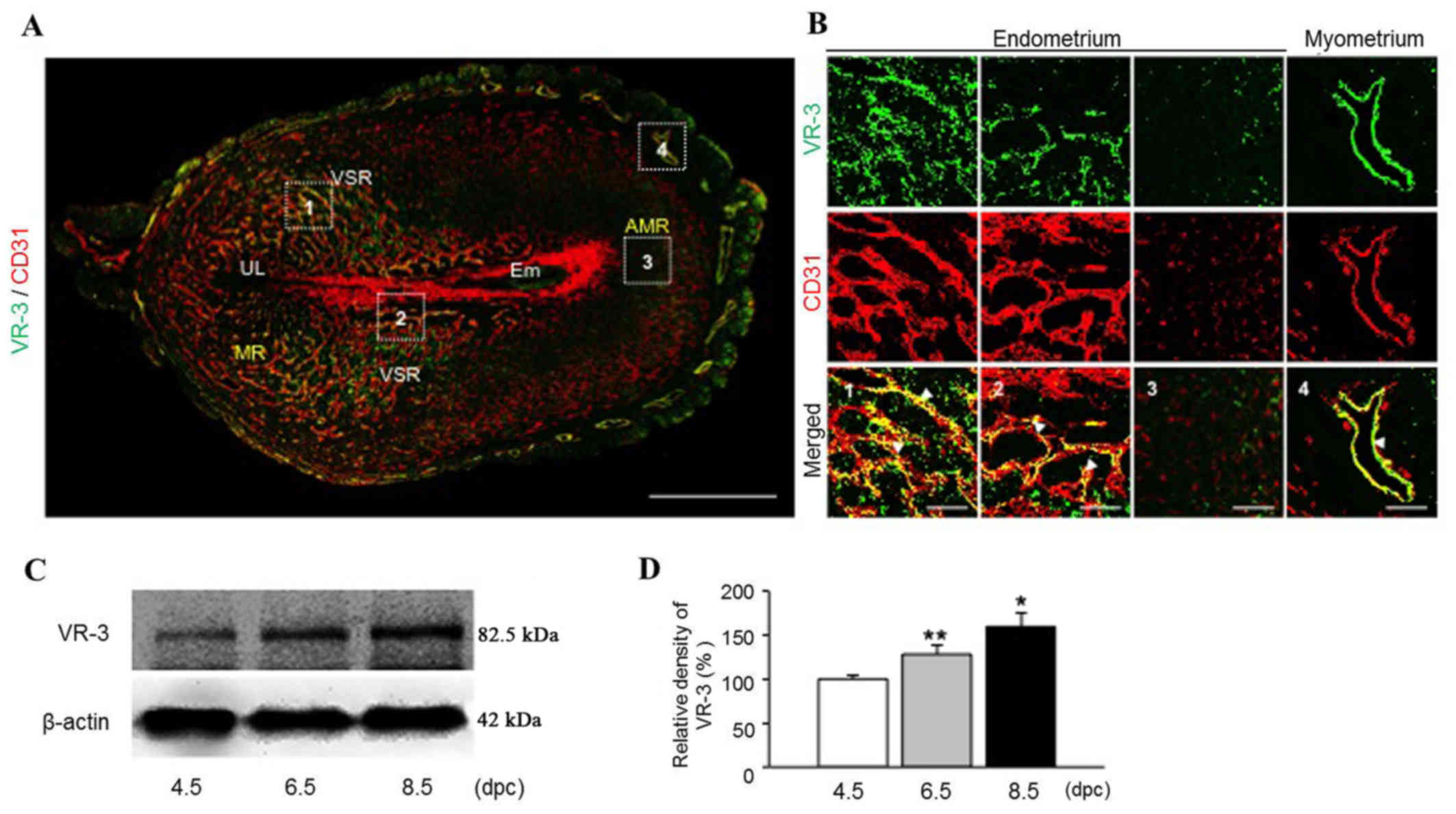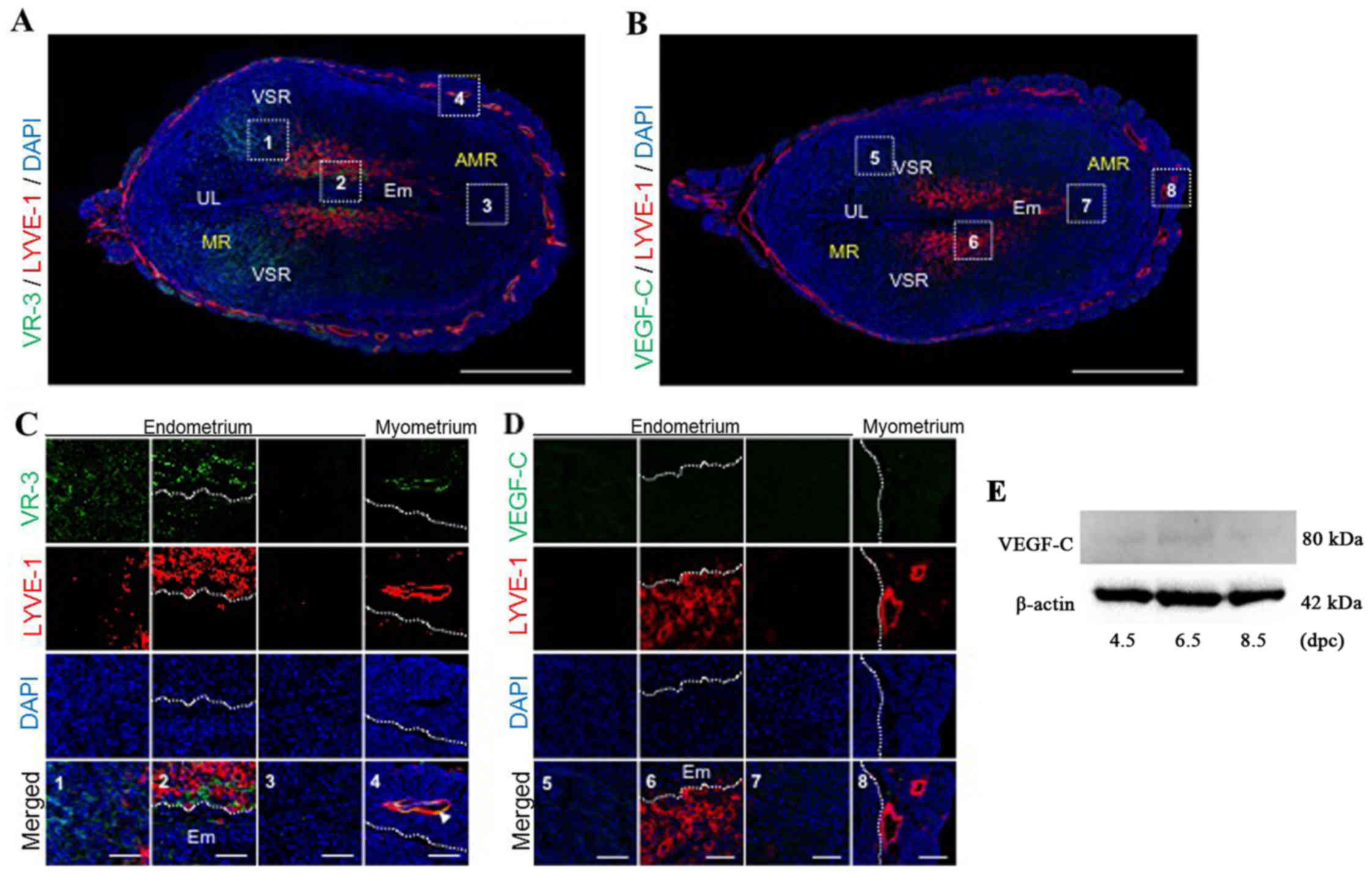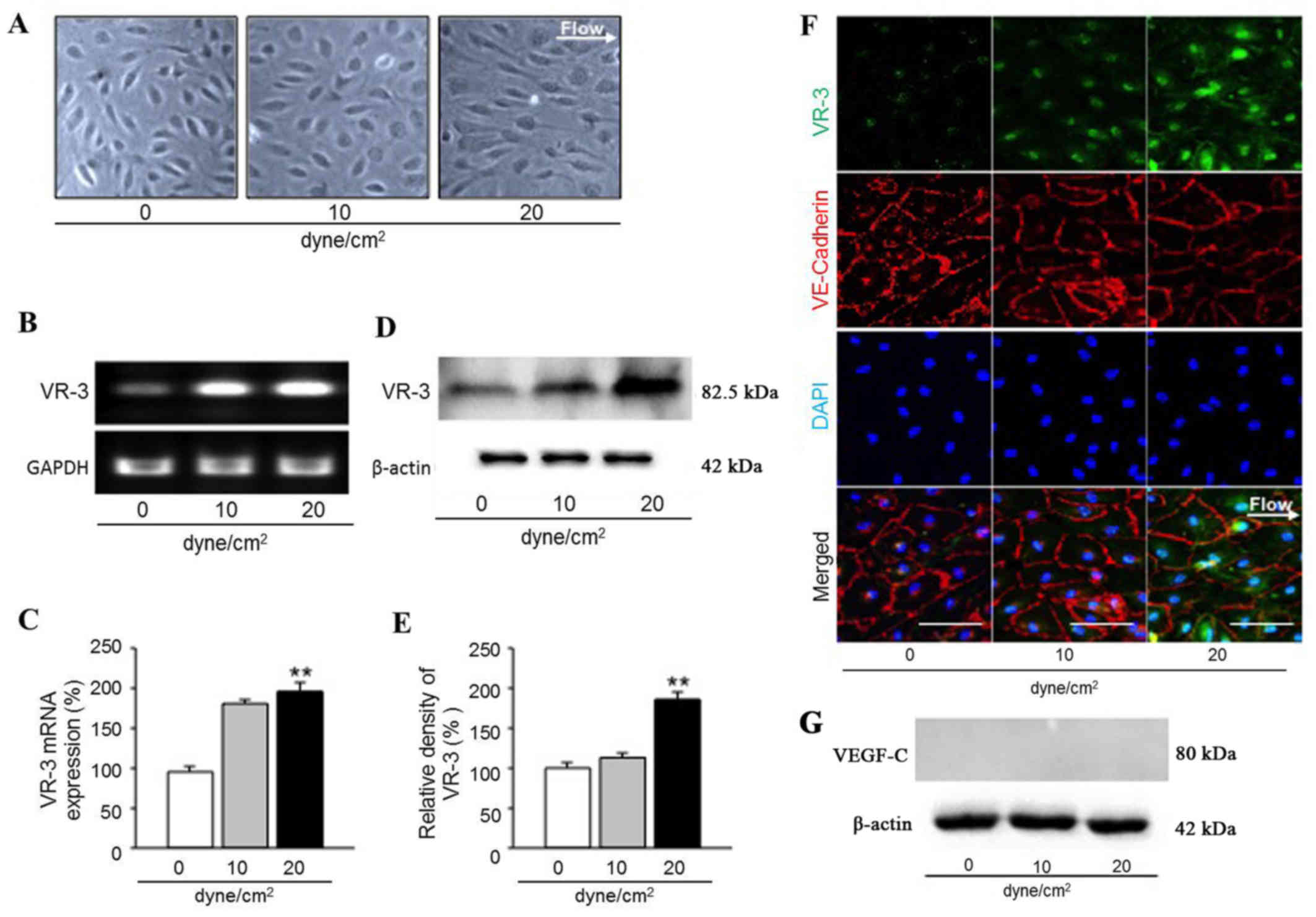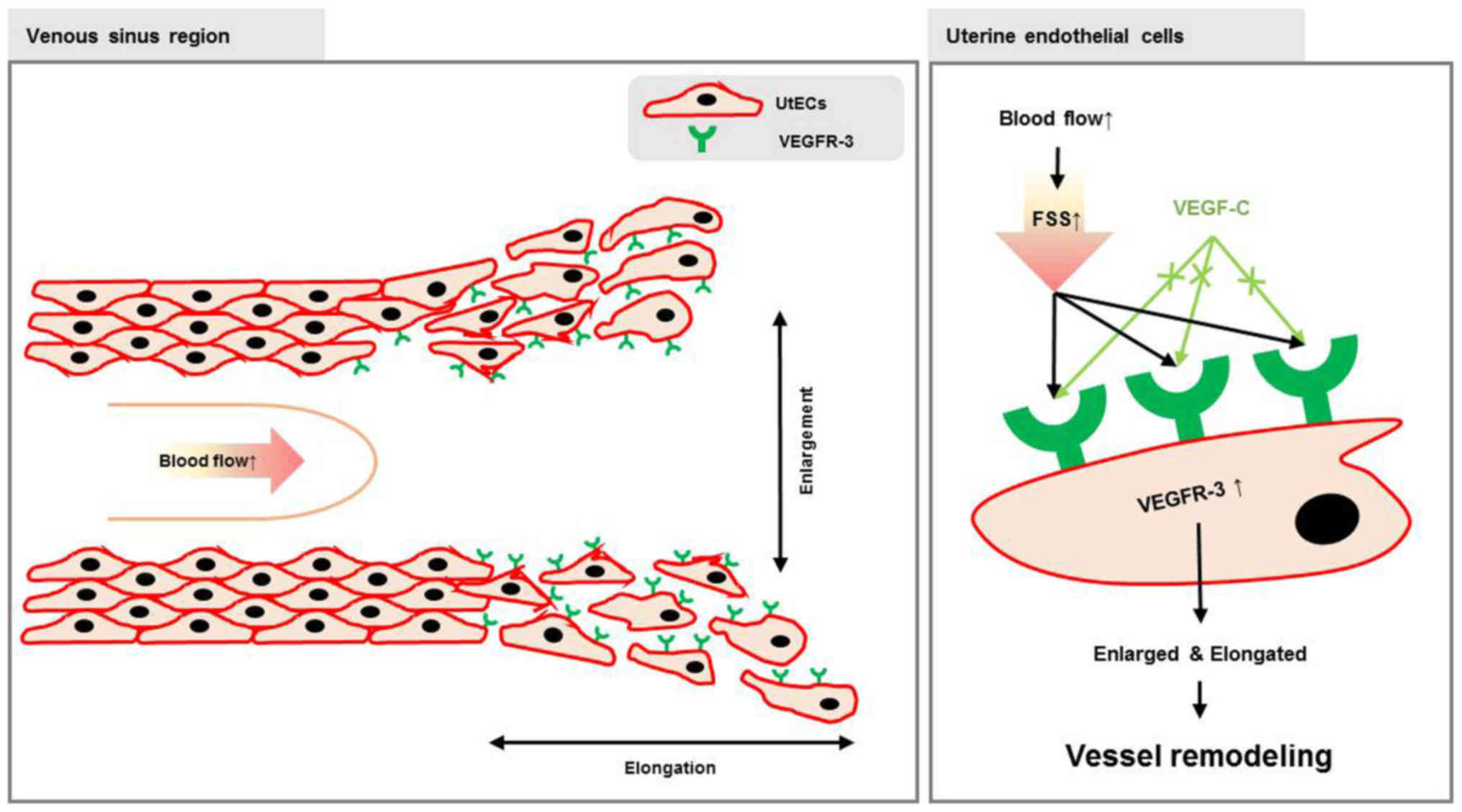|
1
|
Baeyens N, Bandyopadhyay C, Coon BG, Yun S
and Schwartz MA: Endothelial fluid shear stress sensing in vascular
health and disease. J Clin Invest. 126:821–828. 2016. View Article : Google Scholar : PubMed/NCBI
|
|
2
|
Galie PA, Nguyen DH, Choi CK, Cohen DM,
Janmey PA and Chen CS: Fluid shear stress threshold regulates
angiogenic sprouting. Proc Natl Acad Sci USA. 111:7968–7973. 2014.
View Article : Google Scholar : PubMed/NCBI
|
|
3
|
Ghaffari S, Leask RL and Jones EA: Flow
dynamics control the location of sprouting and direct elongation
during developmental angiogenesis. Development. 142:4151–4157.
2015. View Article : Google Scholar : PubMed/NCBI
|
|
4
|
Davies PF: Hemodynamic shear stress and
the endothelium in cardiovascular pathophysiology. Nat Clin Pract
Cardiovasc Med. 6:16–26. 2009. View Article : Google Scholar
|
|
5
|
Chiu JJ and Chien S: Effects of disturbed
flow on vascular endothelium: Pathophysiological basis and clinical
perspectives. Physiol Rev. 91:327–387. 2011. View Article : Google Scholar : PubMed/NCBI
|
|
6
|
Heo KS, Fujiwara K and Abe J: Shear stress
and atherosclerosis. Mol Cells. 37:435–440. 2014. View Article : Google Scholar : PubMed/NCBI
|
|
7
|
Zhang J and Friedman MH: Adaptive response
of vascular endothelial cells to an acute increase in shear stress
frequency. Am J Physiol Heart Circ Physiol. 305:H894–H902. 2013.
View Article : Google Scholar : PubMed/NCBI
|
|
8
|
Osol G and Moore LG: Maternal uterine
vascular remodeling during pregnancy. Microcirculation. 21:38–47.
2014. View Article : Google Scholar
|
|
9
|
Mandala M and Osol G: Physiological
remodelling of the maternal uterine circulation during pregnancy.
Basic Clin Pharmacol Toxicol. 110:12–18. 2012. View Article : Google Scholar
|
|
10
|
Nakamura H, Hosono T, Minato K, Hamasaki
T, Kumasawa K and Kimura T: Importance of optimal local uterine
blood flow for implantation. J Obstet Gynaecol Res. 40:1668–1673.
2014. View Article : Google Scholar : PubMed/NCBI
|
|
11
|
Wang L, Qiao J, Li R, Zhen X and Liu Z:
Role of endometrial blood flow assessment with color Doppler energy
in predicting pregnancy outcome of IVF-ET cycles. Reprod Biol
Endocrinol. 8:1222010. View Article : Google Scholar : PubMed/NCBI
|
|
12
|
Rai A and Cross JC: Development of the
hemochorial maternal vascular spaces in the placenta through
endothelial and vasculogenic mimicry. Dev Biol. 387:131–141. 2014.
View Article : Google Scholar : PubMed/NCBI
|
|
13
|
Sipos PI, Rens W, Schlecht H, Fan X,
Wareing M, Hayward C, Hubel CA, Bourque S, Baker PN, Davidge ST, et
al: Uterine vasculature remodeling in human pregnancy involves
functional macrochimerism by endothelial colony forming cells of
fetal origin. Stem Cells. 31:1363–1370. 2013. View Article : Google Scholar : PubMed/NCBI
|
|
14
|
Soares MJ, Chakraborty D, Kubota K, Renaud
SJ and Rumi MA: Adaptive mechanisms controlling uterine spiral
artery remodeling during the establishment of pregnancy. Int J Dev
Biol. 58:247–259. 2014. View Article : Google Scholar : PubMed/NCBI
|
|
15
|
Roberts JM and Escudero C: The placenta in
preeclampsia. Pregnancy Hypertens. 2:72–83. 2012.PubMed/NCBI
|
|
16
|
Conway DE, Breckenridge MT, Hinde E,
Gratton E, Chen CS and Schwartz MA: Fluid shear stress on
endothelial cells modulates mechanical tension across VE-cadherin
and PECAM-1. Curr Biol. 23:1024–1030. 2013. View Article : Google Scholar : PubMed/NCBI
|
|
17
|
Steward R Jr, Tambe D, Hardin CC, Krishnan
R and Fredberg JJ: Fluid shear, intercellular stress, and
endothelial cell alignment. Am J Physiol Cell Physiol.
308:C657–C664. 2015. View Article : Google Scholar : PubMed/NCBI
|
|
18
|
Baeyens N, Nicoli S, Coon BG, Ross TD, Van
den Dries K, Han J, Lauridsen HM, Mejean CO, Eichmann A, Thomas JL,
et al: Vascular remodeling is governed by a VEGFR3-dependent fluid
shear stress set point. eLife. 4:e046452015. View Article : Google Scholar :
|
|
19
|
dela Paz NG, Walshe TE, Leach LL,
Saint-Geniez M and D'Amore PA: Role of shear-stress-induced VEGF
expression in endothelial cell survival. J Cell Sci. 125:831–843.
2012. View Article : Google Scholar : PubMed/NCBI
|
|
20
|
Shibuya M: Vascular endothelial growth
factor (VEGF) and its receptor (VEGFR) signaling in angiogenesis: A
crucial target for anti- and pro-angiogenic therapies. Genes
Cancer. 2:1097–1105. 2011. View Article : Google Scholar
|
|
21
|
Davydova N, Harris NC, Roufail S,
Paquet-Fifield S, Ishaq M, Streltsov VA, Williams SP, Karnezis T,
Stacker SA and Achen MG: Differential receptor binding and
regulatory mechanisms for the lymphangiogenic growth factors VEGF-C
and VEGF-D. J Biol Chem. 291:27265–27278. 2016. View Article : Google Scholar : PubMed/NCBI
|
|
22
|
Rutkowski JM, Ihm JE, Lee ST, Kilarski WW,
Greenwood VI, Pasquier MC, Quazzola A, Trono D, Hubbell JA and
Swartz MA: VEGFR-3 neutralization inhibits ovarian
lymphangiogenesis, follicle maturation, and murine pregnancy. Am J
Pathol. 183:1596–1607. 2013. View Article : Google Scholar : PubMed/NCBI
|
|
23
|
Coso S, Bovay E and Petrova TV: Pressing
the right buttons: Signaling in lymphangiogenesis. Blood.
123:2614–2624. 2014. View Article : Google Scholar : PubMed/NCBI
|
|
24
|
Wang J, Taylor A, Showeil R, Trivedi P,
Horimoto Y, Bagwan I, Ewington L, Lam EW and El-Bahrawy MA:
Expression profiling and significance of VEGF-A, VEGFR2, VEGFR3 and
related proteins in endometrial carcinoma. Cytokine. 68:94–100.
2014. View Article : Google Scholar : PubMed/NCBI
|
|
25
|
Kim M, Park HJ, Seol JW, Jang JY, Cho YS,
Kim KR, Choi Y, Lydon JP, Demayo FJ, Shibuya M, et al: VEGF-A
regulated by progesterone governs uterine angiogenesis and vascular
remodelling during pregnancy. EMBO Mol Med. 5:1415–1430. 2013.
View Article : Google Scholar : PubMed/NCBI
|
|
26
|
Zarkada G, Heinolainen K, Makinen T,
Kubota Y and Alitalo K: VEGFR3 does not sustain retinal
angiogenesis without VEGFR2. Proc Natl Acad Sci USA. 112:761–766.
2015. View Article : Google Scholar : PubMed/NCBI
|
|
27
|
Saito S and Nakashima A: A review of the
mechanism for poor placentation in early-onset preeclampsia: The
role of autophagy in trophoblast invasion and vascular remodeling.
J Reprod Immunol. 101–102:80–88. 2014. View Article : Google Scholar
|



